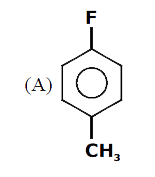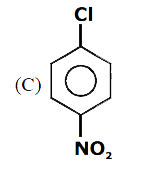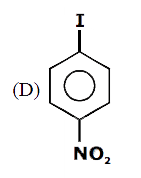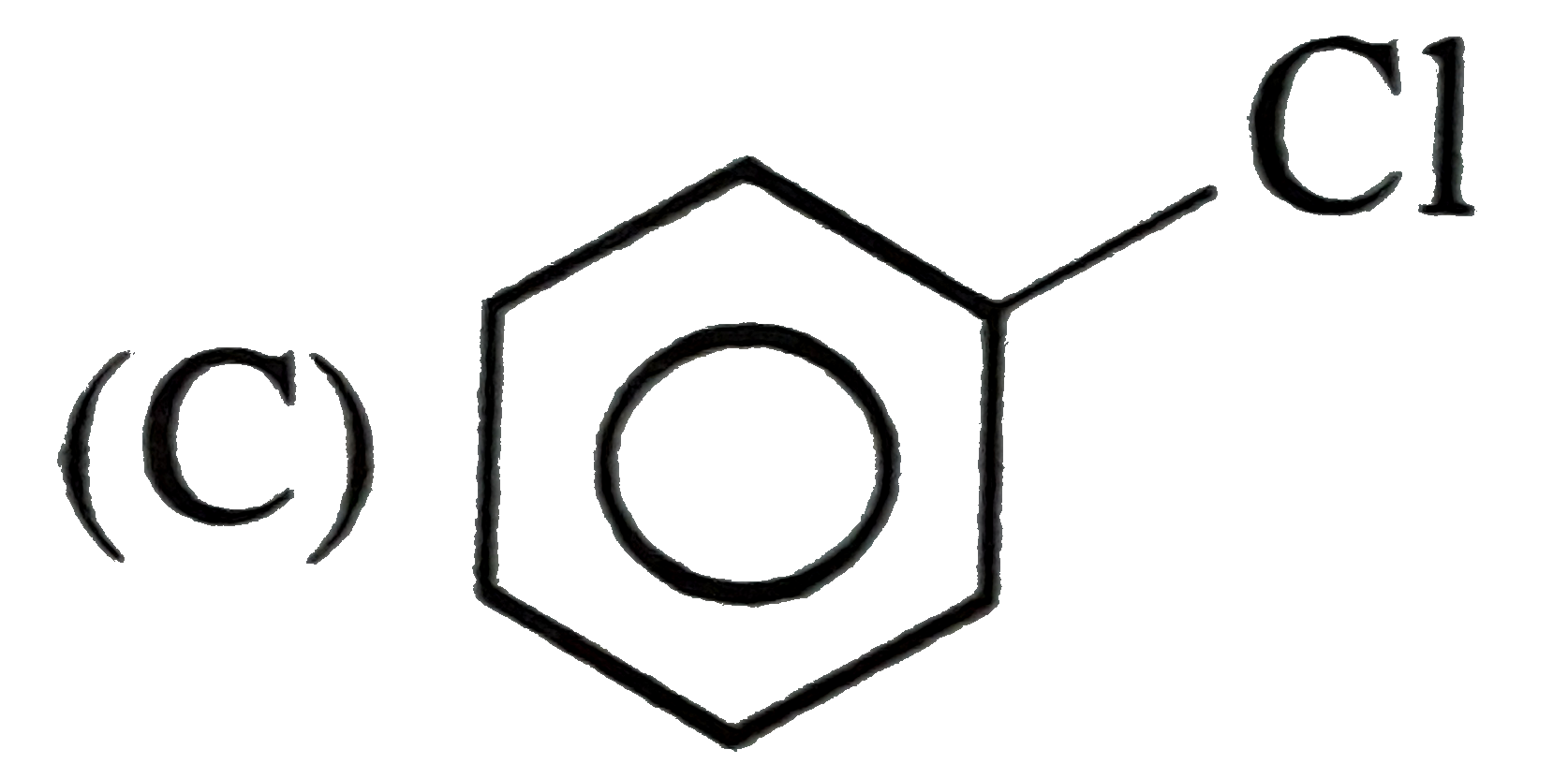Which out of o-chloronitrobenzene and 2, 4, 6-trinitrochlorobenzene is more reactive towards nucleophilic substitution?
To determine which compound, o-chloronitrobenzene or 2,4,6-trinitrochlorobenzene, is more reactive towards nucleophilic substitution, we need to analyze the effects of the substituents on the electrophilicity of the carbon atom bonded to the chlorine atom.
1. Identify the Structures:
- o-Chloronitrobenzene has one nitro group (–NO2) and one chlorine atom (–Cl) attached to the benzene ring.
- 2,4,6-Trinitrochlorobenzene has three nitro groups attached to the benzene ring along with the chlorine atom.
2. Understand Nucleophilic Substitution:
- Nucleophilic substitution involves a nucleophile attacking an electrophilic carbon atom, leading to the replacement of the leaving group (in this case, Cl).
- The reactivity towards nucleophilic substitution is influenced by the electron-withdrawing or electron-donating nature of substituents on the benzene ring.
3. Evaluate the Effect of Nitro Groups:
- Nitro groups are strong electron-withdrawing groups due to their –I (inductive) and –M (mesomeric) effects.
- In o-chloronitrobenzene, the presence of one nitro group will withdraw electron density from the benzene ring, increasing the electrophilicity of the carbon attached to chlorine.
- In 2,4,6-trinitrochlorobenzene, the presence of three nitro groups will significantly withdraw more electron density from the benzene ring compared to just one nitro group.
4. Compare Electrophilicity:
- The carbon atom bonded to chlorine in 2,4,6-trinitrochlorobenzene will be more electrophilic because it is affected by three nitro groups, leading to a greater electron deficiency.
- Conversely, in o-chloronitrobenzene, the carbon is only influenced by one nitro group, resulting in less electron deficiency.
5. Conclusion:
- Since 2,4,6-trinitrochlorobenzene has a higher degree of electron deficiency at the electrophilic carbon due to the presence of three nitro groups, it is more reactive towards nucleophilic substitution than o-chloronitrobenzene.
Final Answer:
2,4,6-Trinitrochlorobenzene is more reactive towards nucleophilic substitution than o-chloronitrobenzene.
- o-Chloronitrobenzene has one nitro group (–NO2) and one chlorine atom (–Cl) attached to the benzene ring.
- 2,4,6-Trinitrochlorobenzene has three nitro groups attached to the benzene ring along with the chlorine atom.
- Nucleophilic substitution involves a nucleophile attacking an electrophilic carbon atom, leading to the replacement of the leaving group (in this case, Cl).
- The reactivity towards nucleophilic substitution is influenced by the electron-withdrawing or electron-donating nature of substituents on the benzene ring.
- Nitro groups are strong electron-withdrawing groups due to their –I (inductive) and –M (mesomeric) effects.
- In o-chloronitrobenzene, the presence of one nitro group will withdraw electron density from the benzene ring, increasing the electrophilicity of the carbon attached to chlorine.
- In 2,4,6-trinitrochlorobenzene, the presence of three nitro groups will significantly withdraw more electron density from the benzene ring compared to just one nitro group.
- The carbon atom bonded to chlorine in 2,4,6-trinitrochlorobenzene will be more electrophilic because it is affected by three nitro groups, leading to a greater electron deficiency.
- Conversely, in o-chloronitrobenzene, the carbon is only influenced by one nitro group, resulting in less electron deficiency.
- Since 2,4,6-trinitrochlorobenzene has a higher degree of electron deficiency at the electrophilic carbon due to the presence of three nitro groups, it is more reactive towards nucleophilic substitution than o-chloronitrobenzene.
2,4,6-Trinitrochlorobenzene is more reactive towards nucleophilic substitution than o-chloronitrobenzene.
Topper's Solved these Questions
- BOOK - MODERN PUBLICATIONCHAPTER - HALOALKANES AND HALOARENESEXERCISE - CONCEPTUAL QUESTIONS25videos
HALOALKANES AND HALOARENES
- BOOK - MODERN PUBLICATIONCHAPTER - HALOALKANES AND HALOARENESEXERCISE - NCERT In-text Questions8videos
HALOALKANES AND HALOARENES
- BOOK - MODERN PUBLICATIONCHAPTER - HALOALKANES AND HALOARENESEXERCISE - UNIT PRACTICE TEST12videos
HALOALKANES AND HALOARENES
- BOOK - MODERN PUBLICATIONCHAPTER - EQUILIBRIUMEXERCISE - Unit Practice Test13videos
EQUILIBRIUM
- BOOK - MODERN PUBLICATIONCHAPTER - HYDROCARBONSEXERCISE - UNIT PRACTICE TEST15videos
HYDROCARBONS
Similar Questions
Knowledge Check
- Question 1 - Select One
Least reactive towards nucleophilic additon is
ACH2=OBCCl3−C∣∣O−C2H5CCH3−C∣∣O−C2H5DCH3−C∣∣O−H - Question 2 - Select One
Which of most reactive towards nucleophilic aromatic substitution.
A B
B C
C D
D
- Question 3 - Select One
Which is least reactive towards nucleophilic substitution (SN2)
ACH2=CH−CH2ClB(CH3)3CClC DCH3CHClCH3
DCH3CHClCH3
Which of the following is least reactive towards nucleophilic substitution?
View SolutionWhich compound is most reactive towards nucleophilic addition ?
View SolutionAryl halides are less reactive towards nucleophilic substitution because
View SolutionWhich is most reactive towards nucleophilic addition reactions?
View SolutionWhich one is least reactive in a nucleophilic substitution reaction?
View Solution

